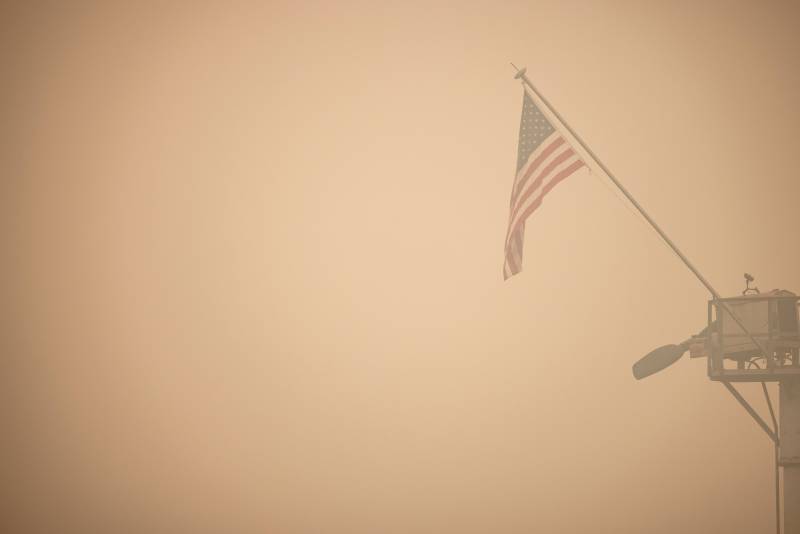How do you get a grasp on the true cost of wildfires in the state? By looking at budget spreadsheets?
Wara: It’s actually surprisingly difficult. We can do that for Cal Fire’s budget, but not for other costs to the state. We thought this would be a much simpler problem. Even framing the costs becomes a conceptual problem. For example, to many people, insurance appears like a cost. But you could argue insurance is just moving money around — who pays for a fee, basically. We thought there would be some sort of thorny conceptual issues, but we did not understand when we first started the work, that there were so many places that we aren’t actually measuring the costs. And we didn’t understand, I think, how large the costs were in areas that are not well measured.
Where are we not measuring the costs?
Wara: There are two big areas. The first and arguably the most important is in terms of the public health impacts; the most important of those is the smoke impacts. The morbidity and mortality impacts, deaths and sickness, from wildfire smoke are an incredibly important public health issue for the state of California. They’re not systematically measured.
This is an area of developing science, but what we uncovered leads us to believe that there are many, many people dying from smoke-related causes due to wildfire in California, and probably many more people being admitted to emergency rooms with respiratory distress or other health-related problems.
Another place where we really don’t have a good systematic look, but we’re increasingly concerned, relates to the ecosystem impacts of fire. Wildfires at the scale that we’re experiencing now in California have big impacts on aspects of ecosystems that we depend on very heavily for our well-being in society. In particular, impacts on water resources are large, but not well accounted for.
Some of these problems are very complex. Do you think truly tracking the cumulative and comprehensive costs of wildfires is possible?
Wara: I think we can do much better. And I think it’s going to change the politics of taking action to reduce risk. That’s because if you’re having a conversation about, say, fuels management, it’s one conversation when you’re talking about the private landowners in question, the fire agencies, and maybe environmentalists who are concerned about trees and ecosystems. It becomes a different conversation when you’re talking about the health of 40 million Californians.
Why is it important to know all of the costs of factors we haven’t considered before?
Wara: The reason to fully value the cost is it gives us a sense for what we should be willing to spend to avoid these harms.
Is the second part of that, that we should be spending a lot more than we are currently?
Wara: I think everyone on the report steering committee would say, “Yes.” But we shouldn’t necessarily be spending it in the same way.
At the same time as we maintain our commitment to having the best firefighting agency in, frankly, the world — Cal Fire is an amazing organization — we need to grow our spending on the aspects of the problem that will make it easier for firefighters to gain the upper hand when fires inevitably occur. That has to do with fuels management, building safer communities, using land as a tool to reduce risk, and “home hardening” — reducing the chances of home ignition. That makes it easier for firefighters to fight fire and also easier for communities to recover afterward.
I’ve heard of benzene getting into water from plastic pipes after a fire. What are some of the broad impacts on water quality?
Wara: Ash is a big issue, as is runoff from burned landscapes where there were developments, vehicles and houses that burned. If ash gets into the surface water flow and contaminates streams and reservoirs it becomes a huge issue. When you burn down a house, you’re creating a pretty toxic mixture of ash, and if that isn’t managed well, runoff can be really deleterious to water quality. Sediment, erosion and landslides also become big problems. A landscape may retain less water after a bad fire, contributing to drought.
But we don’t really understand these impacts very well. Typically there might be a study on sediment for, say, this fire. And there’ll be a study on salmon habitat for that fire. But we don’t, in any systematic way, look at the impacts on water quality, quantity or the movement of water within watersheds from all big fires. However, we know enough to be seriously concerned given the scale of wildfires that the state has experienced since 2017.
What are some of the key recommendations of the report that you would like people to know about?
Wara: A key conclusion of the report is that public health impacts from smoke are a big part of the picture, so we should think about wildfire not just as a problem for people who live in the wildland urban interface, but as a statewide problem. It has important equity impacts as well. The smoke impacts people most who have to work outdoors, who live in older housing that’s not as tightly sealed as newer, more efficient buildings.
Another key takeaway from the report is that there is no one-size-fits-all solution for wildfire. So we need to think about regional solutions in a state as big as California.
The other thing I would say is that climate change is a big factor in driving what is happening in California, but so are many other things. And that’s actually a good thing because it means that there are many things under the state’s control that we can do to make this problem better.
So, if a problem has multiple causes, then there are multiple ways to address it as well.
Wara: That’s right. Exactly.

